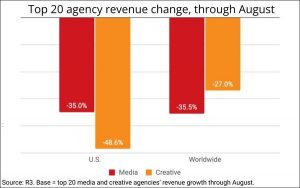To say, ‘change is hard’ is to quote the blatantly obvious. To add, ‘but change is necessary’ is to pour salt in the wound of many a leader today. Leaders in organizations across the world find themselves perplexed, and often frustrated, by the fact that change (or evolution, if you prefer) is required at all levels, at a nearly constant pace, to remain relevant, let alone competitive.
Driven by a constant stream of new market entrants, disruptive new technologies and ever-stiffening competition; entire markets are shifting, expanding, contracting, appearing, and disappearing at a dizzying pace.
Driven by our subconscious minds’ strongest impulse beyond survival needs, safety is never far from top of mind. Put another way, change is often viewed as a threat – a deviation away from certainty, and uncertainty is one reason we fear change.
Enter the leaders’ paradox: to satisfy organizational security you must frequently ask your team(s) to do things they may perceive as threatening their personal security. This conundrum is exactly why leaders today must be equipped with tools, of both the strategic/ structural type, as well as the psychological. This is not to argue that managers and leaders should try to become coaches or therapists, but merely, that they must be personally equipped, and able to guide others, using concepts in the realm we consider to be ‘soft skills’.
Elements of Behavior Change
For leaders to be able to lead their teams through the oft-challenging process of behavior change, they need two things. First, leaders need to know the primary constants in behavior change theory; which according to research come down to one’s beliefs about their own abilities, and their intent to change. One’s beliefs about their abilities, according to cognitive behavioral therapy (CBT), will, to a large extent, dictate the quality and quantity of actions a person will take. In short, thoughts about events lead to our beliefs, and our beliefs inform our emotions, which then heavily influence which actions we see as options to us, and which actions we ultimately take. Without having to become a CBT therapist, leaders can understand to a degree the inner workings of their teams’ self-concept, and what they believe is and isn’t possible based on their thoughts and general point of view.
By practicing reinforcing behaviors (‘catch them doing right’) and by investing time with their teams (show them they’re not just employee # 32458), leaders can have a positive impact on their teams’ confidence and views of their own capabilities. If the team believes it’s possible, then the next step is to direct will towards a desirable outcome. With this goal in mind;
- Leadership is not, ‘this is the goal team, let’s go!’
- Leadership is aligning individual success and organizational success (and vice versa)
To achieve the end goal of your entire team ‘rowing in one direction’, leaders must avoid telling. Your team are not your children. Leaders must also avoid selling. Your team are generally smart people who can see through insincerity. To cultivate the will of your team, leaders must start compelling. To do this, there is no faster way than the take the time and be intentional about learning what matters to your team. You must learn what makes them tick, and what motivates your team – their ‘currency’, if you will.
A Behavior Change Formula
The Second tool leaders need in their toolkit to help their teams change is a formula. Luckily, Professor Michael Beer at Harvard Business School, has provided just the thing. According to Professor Beer, the formula for inciting a change in behavior is as follows;
PR (CH) = D x M x P > C
Wherein, the PR (prerequisite) for (CH) change is for leaders to mitigate D (dissatisfaction), and overemphasize M (a model or vision for change). Furthermore, the P (process) cannot be perceived as having too high a C (cost). Put simply, leaders need to learn to ‘poke holes’ in the teams’ case for staying put, while romanticizing the benefits of changing – and reassuring the team that the process won’t be overly cumbersome. This of course, cannot work over time if it becomes a form of manipulation, it must be honest, and formulated with the teams’ best interests in mind.
Fortunately, leaders have a low-hanging fruit of sorts in that the team (human beings in general) do not always act in their own best interests. After all, we’ve already established that people avoid uncertainty, even if it’s part of a very positive change. In short, many people choose comfort over growth or even happiness. Leaders who have earned the trust of their team have the ace up their sleeve of greater fulfillment to enter into the Harvard formula, rather than having to ‘dangle a carrot’ to manipulate their teams.
In most businesses, leaders are charged with the vision of the organization; the team with the execution of that vision. As we’ve established, the team wants to feel a sense of security. Leaders who take the time to earn the trust of their teams by investing time and energy into them can provide a sense of security through uncharted waters.
Leaders who meet their teams where they are can take them where they’ve never been, while helping equip their teams with the skills they’ll need for years to come. Change is necessary, but change is possible, and change can be amazing.
Business & Finance Articles on Business 2 Community
(63)
Report Post






